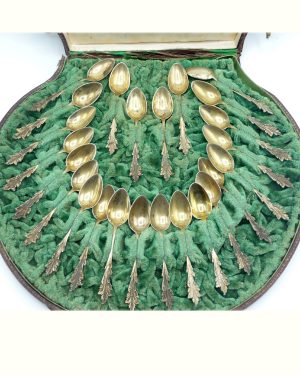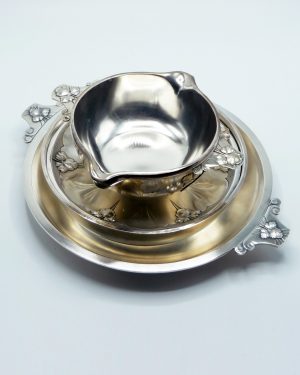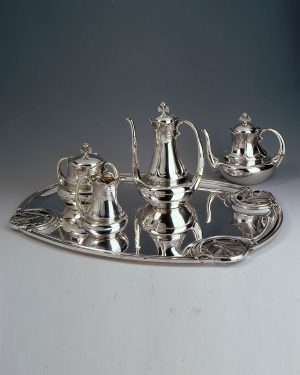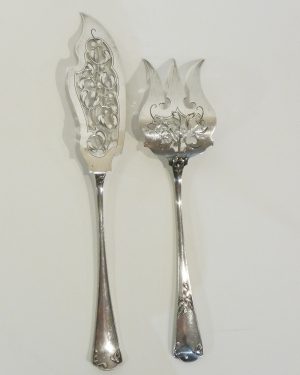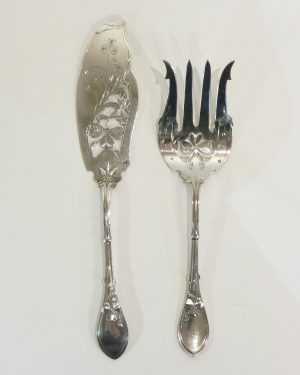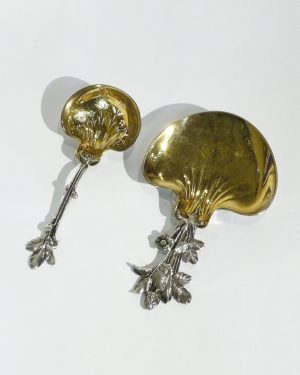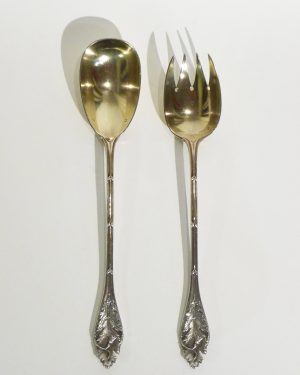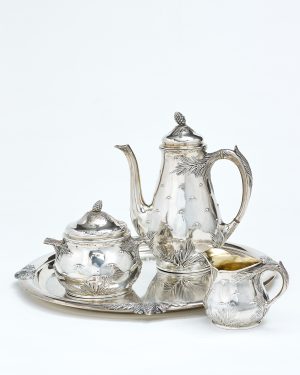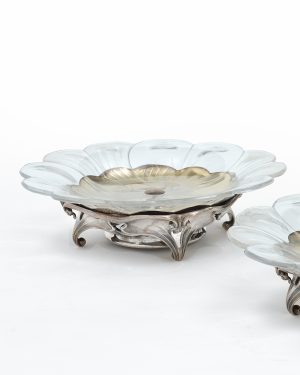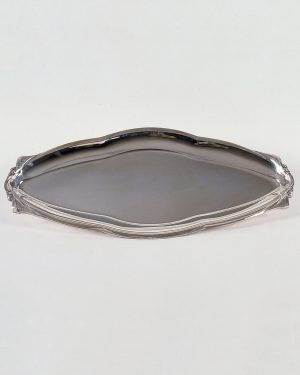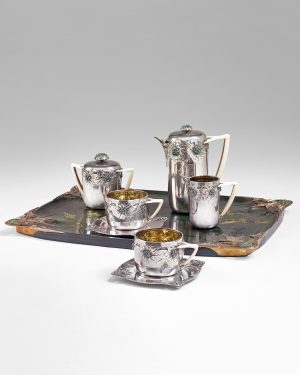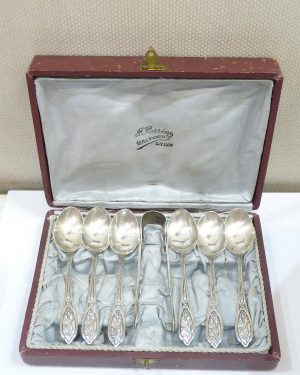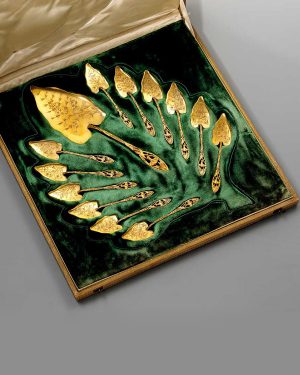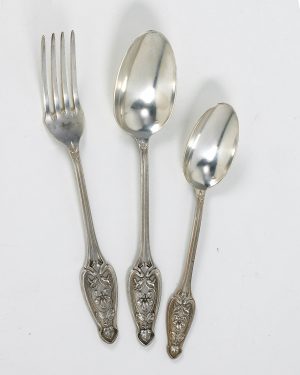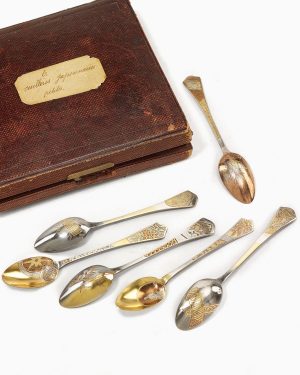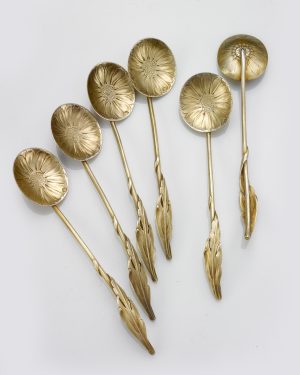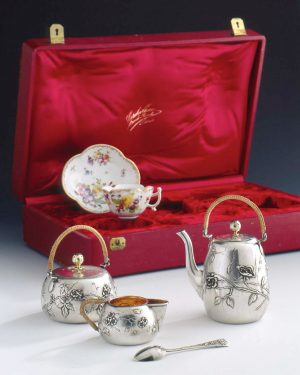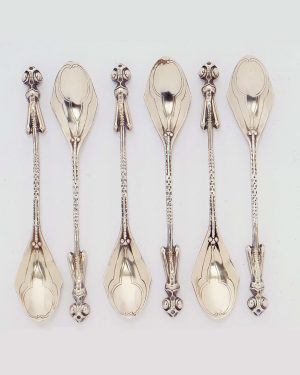FISH PLATE, 1907
Long silver plate, decorated with marine monsters
Signed Bugatti and A. A. Hébrard Rue Royale Paris
Hallmarks
62 cm. long; 30.5 cm. wide
To this day, only one other example of this model is known to exist, sold at the sale of Maître Thierry de Maigret, Paris, Art Nouveau – Art Déco, 7 April 2004, lot 111
The provenance indicated in the catalog stated “Formerly in the collection of Miss S., close relation to Hébrard. Inheritance of her niece, Miss X.”
This model was exhibited at the Galerie Hébrard, 8 rue Royale, Paris, 2 – 25 December 1907
Exhibition
Galerie A.-A. Hébrard, 8, rue Royale, Paris, 2 – 25 December 1907
ReConnaître Carlo Bugatti, Musée d’Orsay, Paris, 10 April – 15 July 2001, ill. p. 61, n. 79 in the exhibition catalog
Uzès Exposition, ancien Évêché, Monticelli, précurseur de l’impressionnisme & Bugatti, une dynastie de créateurs, 22 June – 13 October, 2024
Bibliography
ReConnaître Carlo Bugatti, Musée d’Orsay, Paris, 2001, ill. p. 58 and p. 61, n. 79 in the exhibition catalog




